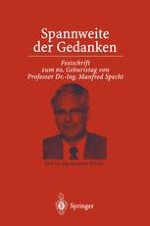1998 | OriginalPaper | Chapter
Influences of Mortar-Aggregate Interface Fracture on Concrete Behaviour
Authors : Oral Buyukozturk, Brian Hearing
Published in: Spannweite der Gedanken
Publisher: Springer Berlin Heidelberg
Included in: Professional Book Archive
Activate our intelligent search to find suitable subject content or patents.
Select sections of text to find matching patents with Artificial Intelligence. powered by
Select sections of text to find additional relevant content using AI-assisted search. powered by
The fracture behavior of concrete composites is influenced by the characteristics of mortar-aggregate interfaces. Initiation and propagation of cracks at the interface or penetration of cracks into the aggregate will greatly influence the global behavior of the material. In the mortar-aggregate interfacial regions of concrete composites, crack path criteria involve relative magnitudes of the fracture toughnesses between the interface and the constituent materials. This paper investigates fracture in two-phase composites in terms of parameters that influence the cracking scenarios in these interfacial regions and affect the fracture behavior of the composite. Parameters studied include elastic moduli mismatch between the mortar and the aggregate and the ratios of the interface fracture toughness to the fracture toughness of the aggregate and the mortar. First, experimental techniques for the assessment of interfacial fracture properties are reviewed. Then, results from numerical and physical model testing are discussed to study the influence of these variables on the global load-deformation behavior of composite beams. Analytical capabilities developed to investigate fracture in composites incorporating transgranular or interfacial fracture scenarios using finite element simulations are examined. Simulations of a cohesive force type that allow parametric variation of fracture parameters are used to study influences on load-deformation performance of the composite. Results of the simulation are used to quantify the effect of different interfacial fracture properties on the fracture and load-deformation behavior of the specimens. The results of both experimental and analytical model studies show that ductility improves when fracture propagates through mortar-aggregate interfaces and also improves with rougher aggregate surfaces. This study advances the understanding of the role of interfaces in the global behavior of the composite and furthers the development of high-performance cementitious materials.
